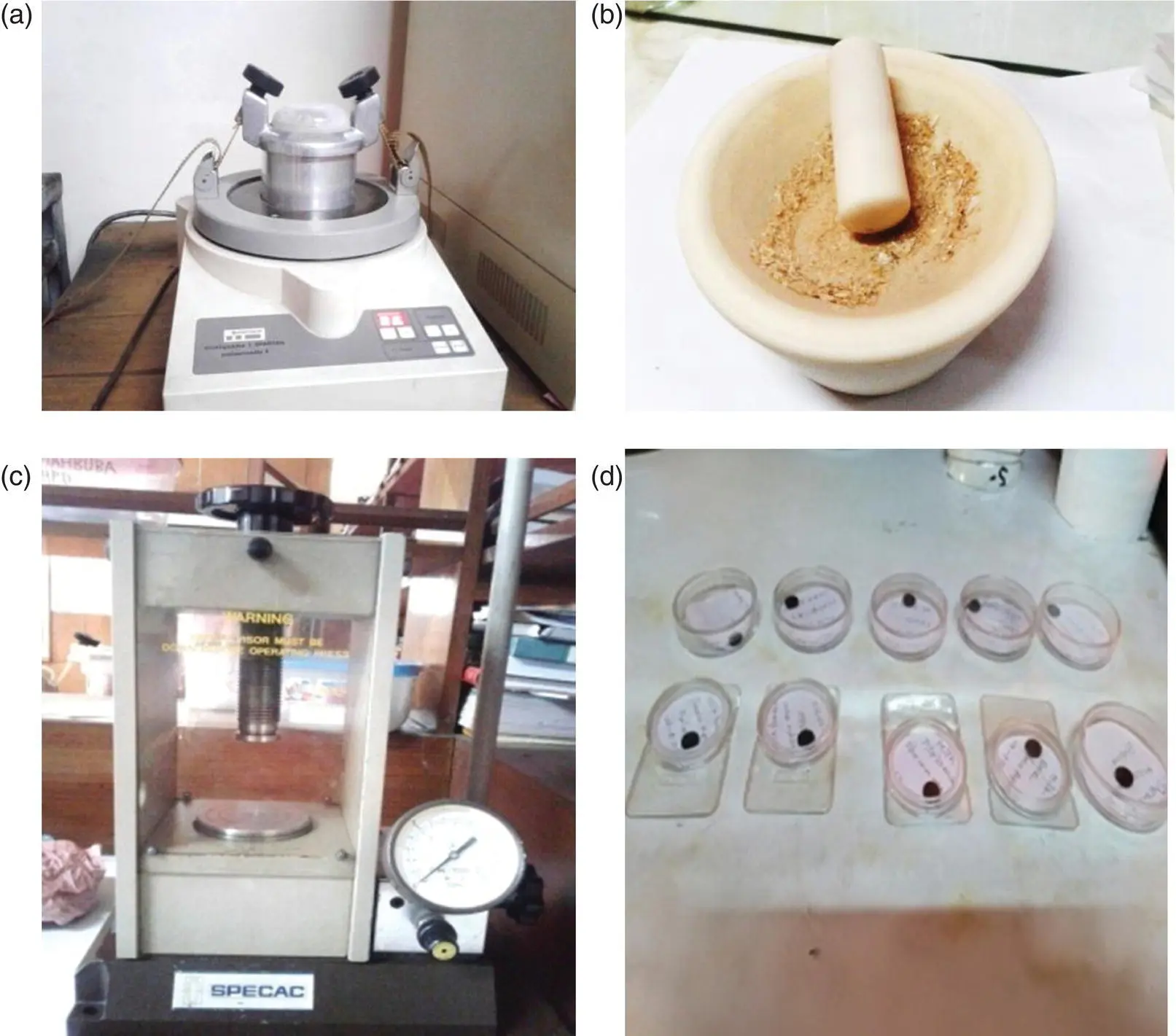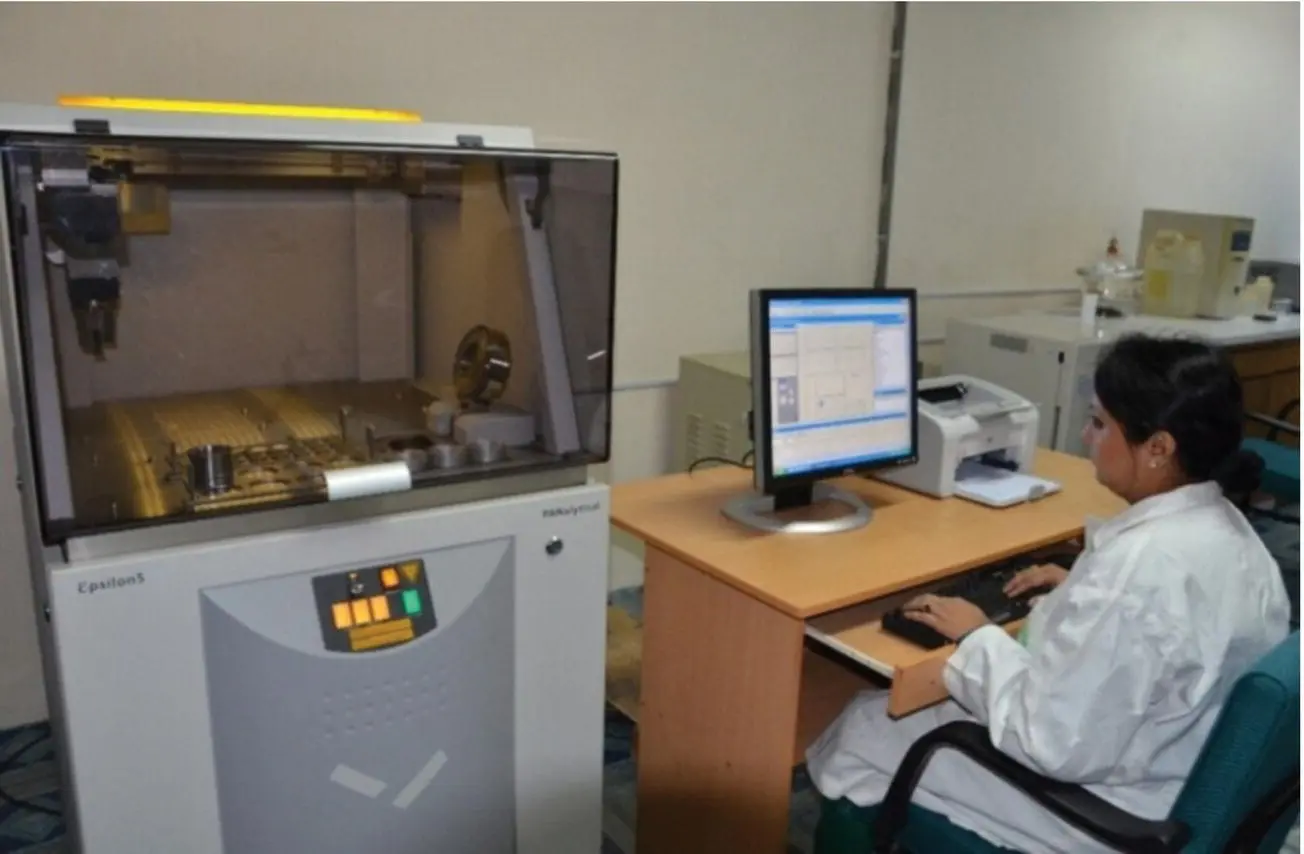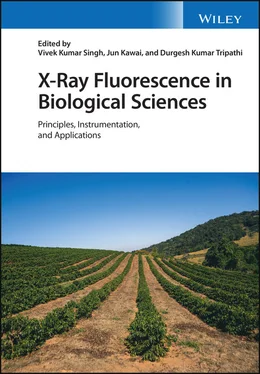X-Ray Fluorescence in Biological Sciences
Здесь есть возможность читать онлайн «X-Ray Fluorescence in Biological Sciences» — ознакомительный отрывок электронной книги совершенно бесплатно, а после прочтения отрывка купить полную версию. В некоторых случаях можно слушать аудио, скачать через торрент в формате fb2 и присутствует краткое содержание. Жанр: unrecognised, на английском языке. Описание произведения, (предисловие) а так же отзывы посетителей доступны на портале библиотеки ЛибКат.
- Название:X-Ray Fluorescence in Biological Sciences
- Автор:
- Жанр:
- Год:неизвестен
- ISBN:нет данных
- Рейтинг книги:5 / 5. Голосов: 1
-
Избранное:Добавить в избранное
- Отзывы:
-
Ваша оценка:
- 100
- 1
- 2
- 3
- 4
- 5
X-Ray Fluorescence in Biological Sciences: краткое содержание, описание и аннотация
Предлагаем к чтению аннотацию, описание, краткое содержание или предисловие (зависит от того, что написал сам автор книги «X-Ray Fluorescence in Biological Sciences»). Если вы не нашли необходимую информацию о книге — напишите в комментариях, мы постараемся отыскать её.
Discover a comprehensive exploration of X-ray fluorescence in chemical biology and the clinical and plant sciences X-Ray Fluorescence in Biological Sciences: Principles, Instrumentation, and Applications
X-Ray Fluorescence in Biological Sciences: Principles, Instrumentation, and Applications
X-Ray Fluorescence in Biological Sciences — читать онлайн ознакомительный отрывок
Ниже представлен текст книги, разбитый по страницам. Система сохранения места последней прочитанной страницы, позволяет с удобством читать онлайн бесплатно книгу «X-Ray Fluorescence in Biological Sciences», без необходимости каждый раз заново искать на чём Вы остановились. Поставьте закладку, и сможете в любой момент перейти на страницу, на которой закончили чтение.
Интервал:
Закладка:
6.2 Determination of Arsenic Concentration in Human Scalp Hair for the Diagnosis of Arsenicosis Disease
6.2.1 Background
Drinking arsenic (As) contaminated water is the main cause of arsenicosis disease, that ultimately leads to a very painful death for the patient. As poisoning or arsenicosis is a medical condition that occurs due to elevated levels of As in the body. According to WHO the safe limit for As in drinking water is 10 μg/l and according to the government of Bangladesh’s standard it is 50 μg/l [1, 2]. Different studies showed that if a person drinks water with an As concentration more than 150 μg/l, the poisoning can enhance mortality in patients dealing with chronic diseases like cancer, heart disease, and diabetes by around 64%. Nevertheless, it can also be dangerous for patients suffering from normal, non‐chronic diseases.
The occurrence of arsenic disease (arsenicosis) depends on the ingestion of As compounds and their excretion from the body. Generally As enters the human body in three different ways: (i) inhalation‐by air, (ii) ingestion by water and food, (iii) absorption through skin. It has been reported that 40–60% of As can be retained by the human body after entering into the body[3]. There are many reasons which cumulatively are responsible for the development of the symptoms of arsenicosis disease, viz.; exposure time, the body’s ability to defend against disease, food habits, concentration of As uptake by individuals, duration etc. and generally it is assumed that 2–20 years time is required to develop the symptoms of the disease [4].
6.2.2 Role of EDXRF
Arsenate and arsenite are the two arsenic compounds which are carcinogenic in nature and tend to deposit on human hair, nail, bone, skin, etc. As such, the toxic effects of As are usually observed in those parts of the body.
Analyzing those organs can easily quantify the level of As exposure in that person. But collection of bone, skin, and nail samples from the human body is quite complicated and sometimes becomes impossible compared to scalp hair. More over it was observed that As has a strong tendency to deposit in human scalp hair, as it is composed of keratin, thus hair tissue contains the highest amount of Arsenic compared to other tissues of a suspected patient. At the time of exposure, As combines with hair keratin and becomes trapped in the hair, making it the best sample option for analysis. Nonetheless, hair tissue is a good biological indicator for chronic As exposure as the As excretes slowly through the hair. Therefore, by measuring the concentration of As in scalp hair, it is possible to have an accurate indication of As exposure levels in a body. There are many analytical methods suggested for determining As in scalp hair, but among them EDXRF is the safest and most simple technique, which gives more accurate results as no digestion or chemical treatment is required for sample preparation.
6.2.3 Collection and Preparation of Hair Sample
Two to four grams of hair samples is required for the determination of As concentration in an exposed person. A stainless‐steel scissor was used to collect the hair sample obtained from different parts of the scalp at an interval of 1 cm. Collected hair samples, preserved in zipper polyethylene bags, were cut into small pieces, washed with a sufficient volume of acetone for a couple of minutes, and then thoroughly washed again several times with deionized water, and finally washed once more with acetone [5]. The sample was preliminarily air dried at room temperature for about three hours, and then again in an oven at 180 °C until the sample was completely dry.
6.2.4 Sample Preparation
Initially the hair sample was prepared by grinding in a ball mill until powderized ( Figure 6.1a), and then crushed to a fine homogeneous mass by a carbide mortar and pestle ( Figure 6.1b). A pellet of 2.5 cm diameter was prepared from the powdered mass using a hydraulic press pellet maker (Specac) ( Figure 6.1c), applying 10 tons pressure, for subsequent analysis by EDXRF. The pellets from the standards were also prepared similarly for construction of calibration curves. All pellets ( Figure 6.1d) were preserved in desiccators until irradiation.
6.2.5 Sample Analysis
The Epsilon 5 EDXRF spectrometer ( Figure 6.2) equipped with a Gadolinium (Gd) tube at 100 kV is designed for fast, high precision, qualitative and quantitative elemental analysis. This was the machine used to determine Arsenic concentrations in hair samples [6]. It is microprocessor‐controlled and operated from an external PC connected to the spectrometer. The sample changer of the system can accommodate up to 133 samples. It has a programmable system that automates the loading of the sample into the measuring chamber. It is outfitted with stainless steel trays to hold samples in the cabinet and sample cups to hold samples in the measuring chamber during irradiation.

Figure 6.1 (a)–(d) Different steps of making sample pellet for EDXRF analysis. (a) Initially hair sample was grinding with ball mill. (b) Finally grinding with mortar and pestle to get fine powder for making pellets. (c) Making of pellets with Hydraulic press pellet maker. (d) Pellets is ready for irradiation.

Figure 6.2 Irradiation of sample pellets using compact energy dispersive X‐ray fluorescence (EDXRF) system.
6.2.6 Accuracy and Precision of the Method
6.2.6.1 Construction of Calibration Curve
In any analytical technique, validation of the method is the most important quality control issue. Accurate and precise results depend on the careful construction of the method or analytical technique which produces them. A calibration curve was constructed using three lab‐synthesized secondary standards of arsenic in varying concentrations (5.8, 9.5, and 14.8 ppm) prepared from commercially available 1000 ppm As standard (Mark, Germany). The secondary standards were prepared by doping 2 g of cellulose with different amount of As [7]. The accurate concentrations of the element in the standards was obtained by the source excited by EDXRF. Figure 6.3shows the calibration plot of As reflecting a good regression value. A certified reference material (CRM) Orchard Leaf (NIST 1571) obtained from the US‐based National Institute of Standards & Technology, was prepared and analyzed under same condition as the real samples and used to check the accuracy and precision of the analytical method [8]. The calculated values of relative error (%) and variation (%) as shown in Table 6.1. was found in good agreement with the certified values and within an error margin of 10%, thus confirming the method is quite fit for purpose.
6.2.6.2 Measured Condition
Measuring time: 100 seconds
Unit: ppm
Arsenic (As) condition: Rb_Re‐Tl
Secondary target: Zr Figure 6.3 Calibration curve for measurement of arsenic (As). Table 6.1 Analytical results of Orchard Leaf (NIST1571) obtained from Compact EDXRF system as the purpose to fulfill the requirement of method validation.ElementsElemental concentration (mg/kg)MeanSDCertified valueRE (%)CV (%)Exp‐1Exp‐2K14 90013 98714 44464614 7001.744.47Ca19 98119 62819 80525020 9005.241.26Mn90.8992.7291.811.2991−0.881.41Fe302311306.506.36300−2.172.08Cu12.2213.0112.620.5612−5.134.43Zn25.1925.5725.380.2725−1.521.06As9.489.659.570.12104.351.26Rb11.3711.4111.390.03125.080.25Sr39.2139.8839.550.4737−6.881.20Pb44.7145.0344.870.23450.290.50
Читать дальшеИнтервал:
Закладка:
Похожие книги на «X-Ray Fluorescence in Biological Sciences»
Представляем Вашему вниманию похожие книги на «X-Ray Fluorescence in Biological Sciences» списком для выбора. Мы отобрали схожую по названию и смыслу литературу в надежде предоставить читателям больше вариантов отыскать новые, интересные, ещё непрочитанные произведения.
Обсуждение, отзывы о книге «X-Ray Fluorescence in Biological Sciences» и просто собственные мнения читателей. Оставьте ваши комментарии, напишите, что Вы думаете о произведении, его смысле или главных героях. Укажите что конкретно понравилось, а что нет, и почему Вы так считаете.











